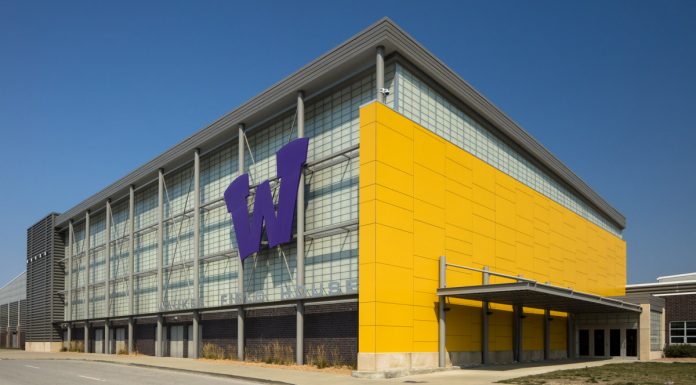The issue of wind energy and wind farms has attracted quite a bit of discussion in my district as Chickasaw County has set their windmill regulations in place and Floyd County is working on theirs. There is also much discussion across the state in other counties as this is an issue elsewhere in Iowa too. But a number of rural landowners are opposing this effort. They cite the decreased quality of life in the rural areas as wind turbines fill up the landscape, the “low hum” noise from which you cannot escape, and the continuous “flicker” of light as the sun reflects from turbine blades.
Large wind energy companies, empowered by federal tax incentives, have come to Iowa and set up wind “farms” in rural and sparsely populated areas. To do so they contract with individual farmers or landowners to set up a windmill on their property. It is done in a close general geographic area. These rural landowners receive payment for providing the property for these windmills. It becomes an additional source of income for them, more than offsetting the cost of taking land out of production. And it does not involve invoking the power of eminent domain.
State law does not regulate the location of these so counties are working to put reasonable regulations in place. The regulations govern height of the windmills as well as the siting and location with certain distances from residences. The regulations can vary from county to county. In some cases, counties have deferred to opposition and have put moratoriums on windmill construction. Bills have been proposed at the state level to make windmill regulations uniform across the state. There is disagreement over whether local control or state control is best.
Thus far, I am not aware of any case in which private property rights have been violated. So far it appears landowners enter into these agreements to have a windmill on their land voluntarily. That does not appear to be an issue. That may not always be the case if the future large electric transmission buildout described in the article below is realized.
I am concerned about what I consider to be an overemphasis on wind and solar energy due to its cost and lack of reliability. Mid-American Energy, according to its website, gets 62% of its energy from wind and they admit they will always need fossil fuels for “reliable and affordable” energy sources. We are always going to need to have coal, oil, and natural gas as forms of energy because the wind doesn’t always blow and the sun doesn’t always shine. We must stay diversified, in spite of pressure from the federal government. We simply cannot power a society with its huge and complex energy demands without fossil fuels. In fact, let the energy sources compete without government distortion to be the most efficient, reliable, and lowest cost.
One source of energy that is way underutilized is nuclear. There have been many advances in nuclear technology over the years, such as the development of small modular nuclear reactors. See article below. Government restrictions on the development of nuclear energy should be lifted so that this can become part of our energy portfolio. Even Iowa’s own nuclear plant near Palo was decommissioned in 2020 due to these restrictions. This is opposite the direction we should be moving.
Electric Transmission Buildout Could Cost Americans Trillions of Dollars
By Bernard L. McNamee – he was a Commissioner on the Federal Energy Regulatory Commission from 2018-2020.
Written March 14, 2024
“Though windmills and solar panels get the headlines, the big energy topic in Washington is electric transmission. Whether it is Congress’s newfound interest in permitting reform, the U.S. Department of Energy’s new Grid Deployment Office, or the Federal Energy Regulatory Commission’s (FERC) upcoming final rule on transmission planning and cost allocation, how to build and pay for long-range transmission to connect generators to customers is considered the final piece in the quest to meet net-zero goals.
Like so many issues in Washington, the need for more transmission lines is accepted without question and the costs are not considered. But for American consumers, especially low-income and elderly, as well as small businesses and energy intense manufacturers, building new transmission lines could result in much higher monthly bills and leave them on the hook for stranded assets.
Traditionally, high-voltage transmission lines, consisting of 150-foot lattice towers crossing the landscape for hundreds of miles, were planned for by local utilities to meet their customers’ energy needs and subject to approval by state public utility commissions. But public policy goals to promote renewables are changing how the grid is being developed.
Over the past few years, States established renewable energy mandates; Congress enacted over $1 trillion in taxpayer subsidies for renewable energy; and President Biden issued an executive order setting net-zero goals for electricity generation by 2035. To fulfill these policies, the grid needs new high-voltage transmission lines—lots of them—and they will be expensive.
According to the “Net-Zero America” analysis published by Princeton researchers, achieving net zero goals with 100% wind and solar by 2050 will require an additional $3.5 trillion in capital spending for new transmission lines. If net-zero goals are pursued with a mix of renewables, nuclear, and natural gas generation (which may include carbon capture), then a significant portion of this transmission investment would be unnecessary. Furthermore, a balanced resource mix of dispatchable and renewable resources would enhance grid reliability without overbuilding renewables or transmission.
Contributing to the cost is that renewable projects are often built far away from where the electricity will be consumed. For example, the Midwest is a great place to build windmills, but long-distance transmission lines are needed to deliver their electricity to big population centers on coasts. Not only are these lines capital intensive, but they also require purchasing or condemning private property to site them. Adding insult to injury, many of these transmission lines will not serve the people whose land is used.
Renewable power developers see the potential for selling their electricity in higher priced power systems near urban centers, while also being able to harvest generous taxpayer subsidies. But having to pay for transmission cuts into profits. Furthermore, property owners impacted by the transmission lines are objecting. The solution: a wave of lobbyists and special interests pressing policy makers to eliminate permitting barriers and to socialize the $3.5 trillion cost of building new transmission lines to more Americans.
In response, FERC is engaged in a rulemaking to change transmission planning and cost allocation. Among the proposals is requiring grid planners to consider factors like “geographic zones”, such as wind potential in the Midwest; state and federal “public policy goals”; and “trends” in technology. If adopted, these factors would provide more subjective ways to justify building big, expensive, long-range transmission projects that would be paid for by a broader number of Americans.
With public concerns about costs, transmission advocates now argue that more transmission is needed for grid reliability. Yet, the threat of blackouts is the result of the very net-zero policies that now require more transmission. For example, Maryland’s recent decision to shut down the Brandon Shores coal plant will cause customers across 12 states and the District of Columbia to pay $796 million for new transmission projects to support reliability.
Customers may also be left paying for transmission projects that are no longer needed. New technology, such as small modular nuclear reactors that can be built at existing power plants that already have transmission access, may negate the need for new transmission lines to serve renewable generators. The current push for transmission reform may be another expensive example of Washington trying to solve yesterday’s problem. This is not mere speculation, since 2008 customers have paid $250 million for the PATH (Potomac-Appalachian Transmission Highline) transmission line that crossed three states, even though it was never built and never served customers.
It is time for policy makers to reaffirm that the electric grid exists to serve customers, not developers and investors. Transmission planning and cost allocation should be driven by the needs of customers and overseen by the state regulators who are best suited to protect their citizens. At a time when inflation is making its tougher from families and businesses to thrive, imposing additional costs for transmission buildouts for special interests makes little sense.”
Bills Passing the Senate
The following bills passed out of the Senate last week:
AEA Reform: I have written about this bill in a couple recent newsletters so I won’t repeat its provisions in this newsletter. You can find the provisions of the AEA Reform we passed here: https://irp.cdn-website.com/c2e95eab/files/uploaded/My%20Newsletter%202-17-24.pdf
I have heard a lot of input on this bill. I did not support it on the floor. While I understand and support the governor’s concerns with costs, efficiency, and oversight, I also want to ensure schools and the AEA’s know they will be able to provide all the services students are currently receiving, if not better, under the present system before the funding gets changed. And later in the week the House passed an even newer and different version of the AEA bill. We will likely be looking at that in the Senate next week.
State VA Commission: This bill adds a member from the Marine Corps League to the State Commission of Veteran Affairs.
Veteran Modernization: This bill updates Iowa law governing Veteran Affairs. It requires county veteran service officers to obtain federal certification for veteran service officer positions and credentials to access the federal benefits system. Cost for the certification can be paid out of the $10,000 allocation the county VA office receives annually. This will standardize training for county veteran service officers across the state.
Organized Retail Theft: This bill establishes the crime of organized retail theft as when 2 or more persons commit theft for the purpose of reselling the stolen items. Penalties are assigned depending on dangers posed to others and the value of the stolen property.












